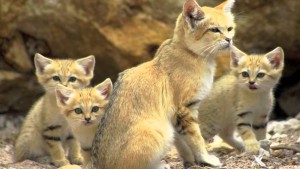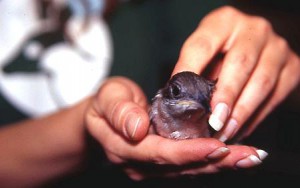If earth’s age was shrunk to one day, single cell organisms came to being at 2:08 a.m., while the first dinosaur appeared at 10:56 a.m.! The most destructive species to ever roam on this planet appeared while the day was about to end, and was successful in killing the largest number of species ever. No extra points for guessing which species this is – the Homo sapiens, aka humans. According to WWF, at least 0.01% of species go extinct every year. While this rate sounds low, one must take into account the number of species on this planet–2-100 million. That is to say, the number of species that is disappearing from this planet is a whopping 150-200 every 24 hours. This number is 1000 times more than the natural rate of extinction since the last dinosaur died about 65 million years ago.
One of the first victims of human’s aggression were the mammoths back in the stone ages when our ancestors lived in caves and learned to use flints to bring fire. This assault has ever since continued. Numerous breeds of big cats such as Amur Leopards, Asiatic Cheetahs, South China Tigers are threatened, and apart from the big cats, other animals like rhinoceros, elephants are the most targeted animals.
Most of these species are big animals, but what about the small ones? The big species have always been “poster boys” for conservation. However, the biggest losers have been the easy-to-overlook small species. Tiny animals, plants and reptiles require equal, if not more, human intervention and protection as the big ones. Small animals like Pileated Gibbons, Pygmy Hippos, Sand Cats, and Egyptian Tortoise are all in urgent need of attention of animal rescue organizations and individuals. These little awe-inspiring animals are in high demand as pets, thus getting snatched away from their natural habitats. At the current rate, animals that will go extinct the soonest are going to be the smallest and weakest ones.
species. Tiny animals, plants and reptiles require equal, if not more, human intervention and protection as the big ones. Small animals like Pileated Gibbons, Pygmy Hippos, Sand Cats, and Egyptian Tortoise are all in urgent need of attention of animal rescue organizations and individuals. These little awe-inspiring animals are in high demand as pets, thus getting snatched away from their natural habitats. At the current rate, animals that will go extinct the soonest are going to be the smallest and weakest ones.
The danger to these species has been recognised. Apart from laws aimed at protecting the species, many organizations like us – International Animal Relief (IAR), WWF, etc. are professionally involved in saving animals that are part of the natural heritage. But besides the organizations, every single one of us can actually contribute to the protection and rescue of these small animals at both individual and community levels.
Most animals get attracted to your backyard because of food. Therefore, there are certain precautions you can take to protect yourself, your property as well as the wild animals.
At community level
-
Gain and spread knowledge: to protect the wild animals you and your community need to know which species are endangered. Learn more about those species and their natural habitats around your community and avoid disturbing them.

-
Volunteer at a local wildlife refuge: Animals are safest from hunting when living in reserves and preserved parks. Find out more about your local parks, and devote some time or money. This would also help your community by creating jobs and businesses.
-
Protect native plant species: Native plant species are home to many bees, birds, small animals, and reptiles, etc. Minimize the cutting of plants and big trees as they provide miniature wildlife habitats for the wild animals.
-
Avoid the use of harmful pesticides: Harmful chemicals in pesticides can hurt not only the wild animals but also humans. Try harmless herbicides instead.
At household level
-
Install a fence: If the animals can’t get in they won’t harm your children and your property.
-
Remove bird feeders and bird baths or install them deep inside your yard so that the wild animals from outside don’t see the birds and get enticed into attacking.
-
Keep household trash out of view of the wild animals to eliminate the attraction of food.
